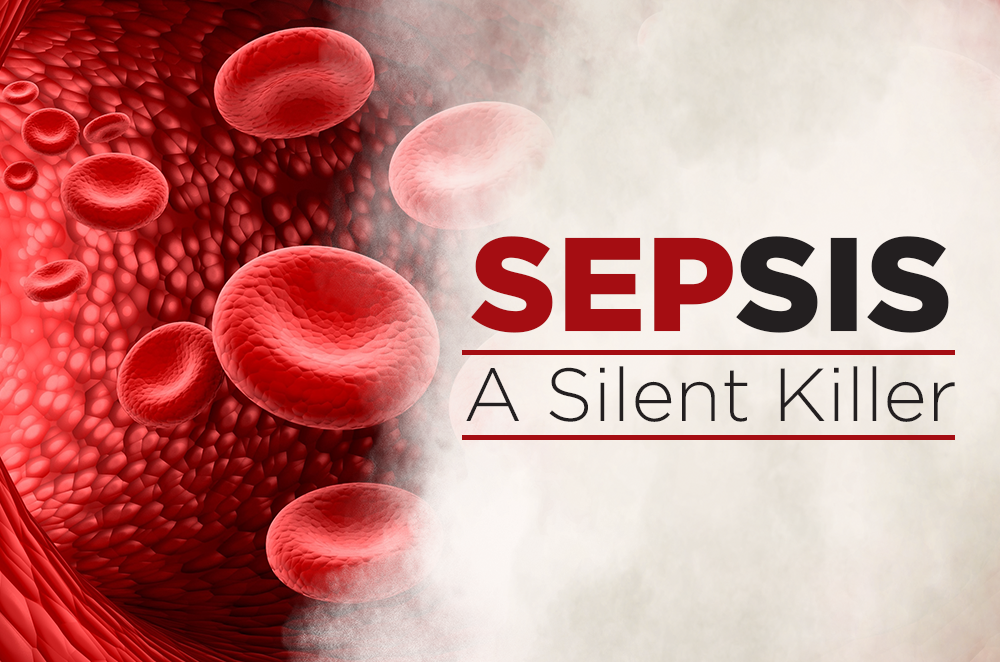Sepsis, often called a silent killer, kills 350,000 adults each year in the United States. This life-threatening condition occurs when the body’s immune response to an infection becomes uncontrolled and starts attacking its own tissues and organs. If left untreated, sepsis can lead to organ failure and death. Recognizing the tell-tale signs of sepsis and seeking care immediately is the key to survival.
Physical Symptoms of Sepsis
Recognizing the signs and symptoms of sepsis is crucial to seek prompt medical intervention. One of the first signs of sepsis is a high fever, often accompanied by chills and sweating. This is the body’s way of trying to fight off the infection. However, if the fever doesn’t respond to treatment or continues to rise, it could be a sign that sepsis is developing. Another common symptom of sepsis is rapid breathing and shortness of breath. This occurs because the body is trying to get more oxygen to its organs and tissues to fight off the infection. In addition to fever and rapid breathing, sepsis can also cause a rapid heart rate. This is due to the body’s attempt to pump more blood to the organs and tissues that are under attack. If you notice that your heart rate is significantly higher than usual or if you feel your heart racing, it could be a sign of sepsis.
Other signs of sepsis include confusion or disorientation, which can be attributed to the toxins released by the infection affecting the brain. You may also experience extreme pain or discomfort, particularly in specific areas of your body that are infected. This can be a sign that the infection is spreading rapidly and causing damage to surrounding tissues. As sepsis progresses, you may notice changes in your skin. It may become pale, discolored, or mottled. This is due to the decreased blood flow to the skin because the body redirects resources to fight off the infection. You may also notice that your urine output decreases or becomes dark in color. This is a sign that the kidneys are not functioning properly, which can occur during sepsis.
Another alarming symptom of sepsis is a sudden drop in blood pressure. This is known as septic shock and can have life-threatening consequences if not treated immediately. When blood pressure drops significantly, the organs and tissues in the body do not receive enough oxygen and nutrients, leading to organ failure. In some cases, sepsis can also cause gastrointestinal symptoms such as nausea, vomiting, diarrhea, or abdominal pain. This is because the infection can affect the digestive system and disrupt normal bowel movements. If you experience any of these symptoms along with other signs of sepsis, it is important to seek medical attention as soon as possible.
Mental Symptoms of Sepsis
In addition to physical symptoms, sepsis can also have a significant impact on a person’s mental and emotional well-being. Many individuals with sepsis report feeling extremely fatigued or weak, as the body is working overtime to fight off the infection. This can make it difficult to perform daily tasks or participate in activities that were once enjoyable. The constant pain and discomfort can also lead to feelings of frustration, helplessness, and depression.
Furthermore, sepsis can affect cognitive function and mental clarity. Some individuals may experience confusion, disorientation, or difficulty concentrating. This can be incredibly distressing and may interfere with work or personal relationships. It is important for individuals experiencing these symptoms to communicate with their healthcare team so that appropriate support and treatment can be provided.
Effective Treatment
Sepsis requires prompt and effective treatment to improve outcomes for affected individuals. Early recognition and aggressive intervention are key in managing this condition. The treatment of sepsis involves a multi-faceted approach that includes the administration of intravenous antibiotics to target the underlying infection. Additionally, fluid resuscitation is essential to restore blood pressure and maintain organ perfusion. Appropriate drainage of an abscess or removal of infected tissue also plays a crucial role in resolving the infection.
Continuous patient monitoring, meticulous supportive care, and involvement of a multidisciplinary team are important components of sepsis treatment. By addressing the underlying infection, optimizing organ function, and providing comprehensive care, we can strive to improve outcomes for individuals suffering from this critical condition. If you suspect sepsis in yourself or a loved one, seek urgent medical care at the Drewry Family Emergency Center.
For more information about Sepsis, visit https://www.sepsis.org/
Resources:
https://www.sepsis.org/?fbclid=IwAR1qM9s5ro6HungLguwQ2hohVlrRSJoJyOjHjqyUeT_491d9xQiNZX0Q_KE
https://www.cdc.gov/sepsis/what-is-sepsis.html
Disclaimer
The Comanche County Memorial Hospital website does not provide specific medical advice for individual cases. Comanche County Memorial Hospital does not endorse any medical or professional services obtained through information provided on this site, articles on the site or any links on this site.
Use of the information obtained by the Comanche County Memorial Hospital website does not replace medical advice given by a qualified medical provider to meet the medical needs of our readers or others.
While content is frequently updated, medical information changes quickly. Information may be out of date, and/or contain inaccuracies or typographical errors. For questions or concerns, please contact us at contact@ccmhhealth.com.

